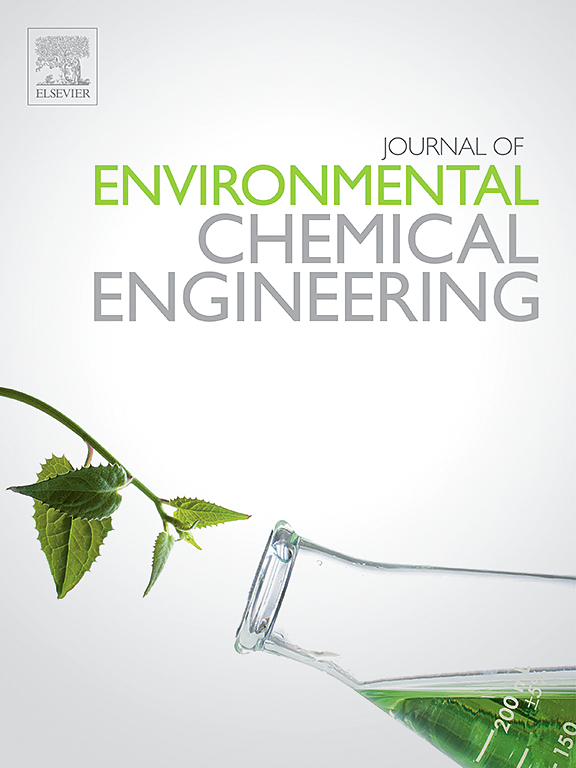用于修复废水中有机污染物的微藻-细菌联合体:重要综述
IF 7.4
2区 工程技术
Q1 ENGINEERING, CHEMICAL
引用次数: 0
摘要
通过废水排放的有机污染物(OPs)会长期严重影响公众健康、自然栖息地和环境。微藻-细菌联合体(MBC)作为一种可持续的生物修复方法,具有修复废水中有机污染物的潜力。本研究的总体目标是回顾 (i) 微藻和细菌联合体的形成,(ii) 微藻-细菌联合体去除有机污染物的机理,(iii) 运行条件对处理效率的影响,以及 (iv) 微藻-细菌联合体去除废水中有机污染物的全局学方法。本综述进一步介绍了如何应用全局组学技术来确定微藻与细菌在联合体内的相互作用。转录组学和代谢组学阐明了微囊藻对培养条件和废水中 OCs 影响的反应。元基因组学确定了四种主要的藻类菌株,并观察了环丙沙星处理过程中的微生物动态。Omics 方法的数据为扩大 MBC 在废水中 OCs 修复方面的应用提供了有力支持。本文章由计算机程序翻译,如有差异,请以英文原文为准。
Microalgae-bacteria consortia for organic pollutants remediation from wastewater: A critical review
Organic pollutants (OPs) discharged via wastewater can severely impact public health, natural habitat, and environment in long term. The microalgae-bacteria consortia (MBC) demonstrates its potential as a sustainable bioremediation method for organic pollutants remediation from wastewater. The overarching goal of this study is to review (i) the formation of microalgae and bacteria consortia, (ii) the mechanism of MBC in OCs removal, (iii) the effects of operating conditions on the treatment efficiency, and (iv) the omics approach of MBC for removing OCs in wastewater. The review provides further insights into the application of omics techniques to identify microalgae-bacteria interaction in the consortia. Transcriptomics and metabolomics have elucidated the response of MBC to the impact of culturing conditions and presence of OCs in wastewater. Metagenomics identifies the four dominating-algal strains and observing microbial dynamics during ciprofloxacin treatment. The data of omics approach provide a strong support for upscaling MBC for OCs remediation in wastewater.
求助全文
通过发布文献求助,成功后即可免费获取论文全文。
去求助
来源期刊

Journal of Environmental Chemical Engineering
Environmental Science-Pollution
CiteScore
11.40
自引率
6.50%
发文量
2017
审稿时长
27 days
期刊介绍:
The Journal of Environmental Chemical Engineering (JECE) serves as a platform for the dissemination of original and innovative research focusing on the advancement of environmentally-friendly, sustainable technologies. JECE emphasizes the transition towards a carbon-neutral circular economy and a self-sufficient bio-based economy. Topics covered include soil, water, wastewater, and air decontamination; pollution monitoring, prevention, and control; advanced analytics, sensors, impact and risk assessment methodologies in environmental chemical engineering; resource recovery (water, nutrients, materials, energy); industrial ecology; valorization of waste streams; waste management (including e-waste); climate-water-energy-food nexus; novel materials for environmental, chemical, and energy applications; sustainability and environmental safety; water digitalization, water data science, and machine learning; process integration and intensification; recent developments in green chemistry for synthesis, catalysis, and energy; and original research on contaminants of emerging concern, persistent chemicals, and priority substances, including microplastics, nanoplastics, nanomaterials, micropollutants, antimicrobial resistance genes, and emerging pathogens (viruses, bacteria, parasites) of environmental significance.
 求助内容:
求助内容: 应助结果提醒方式:
应助结果提醒方式:


